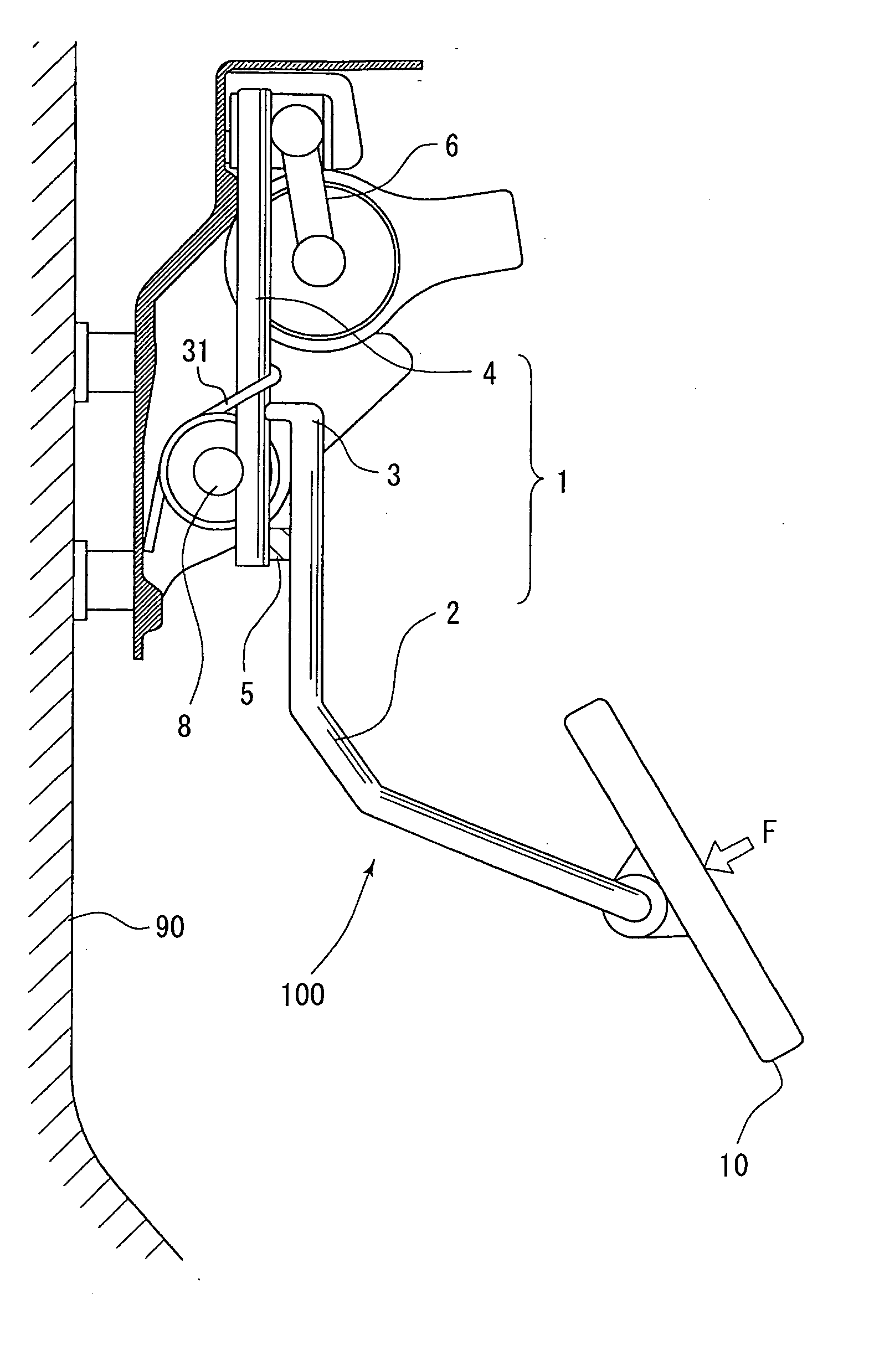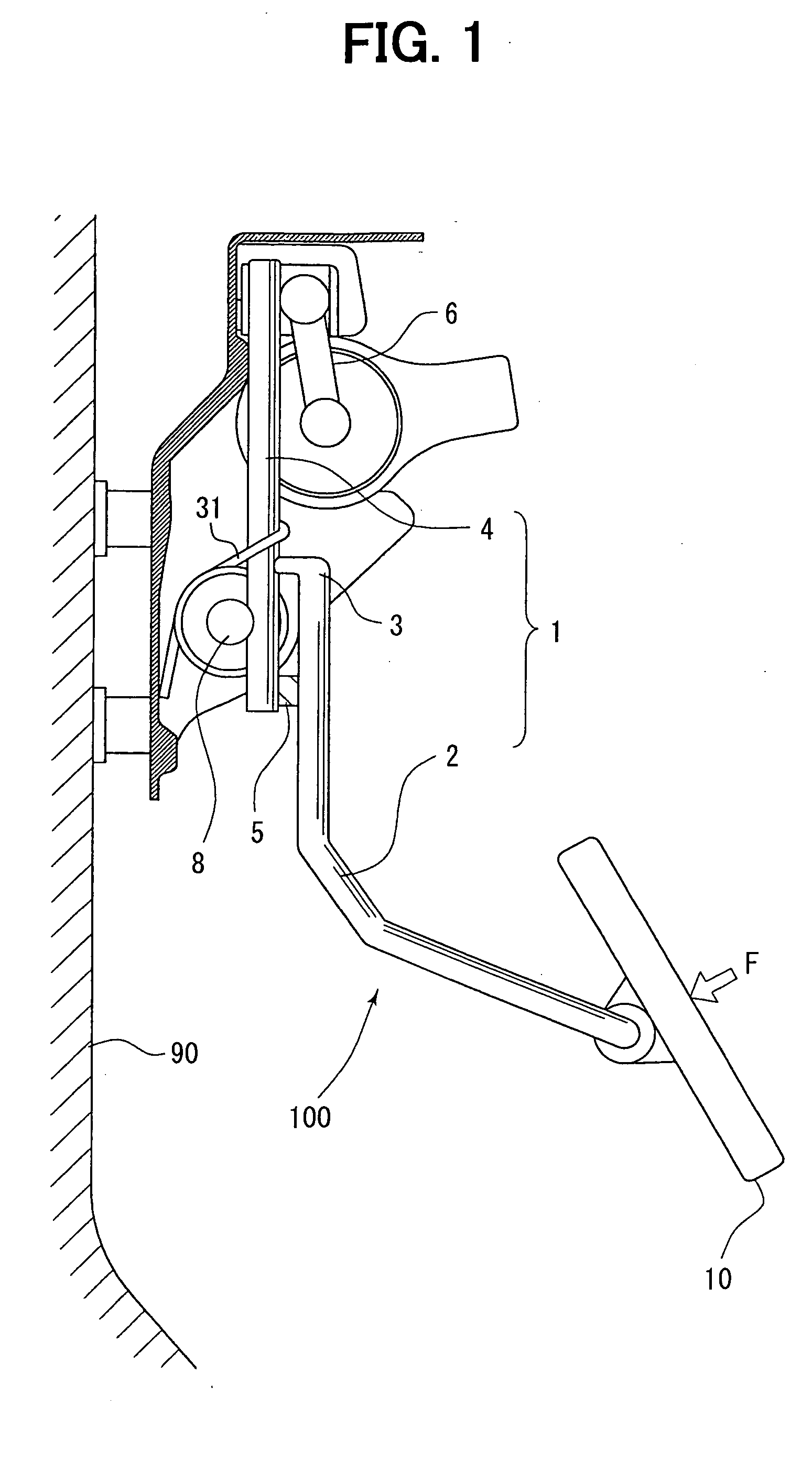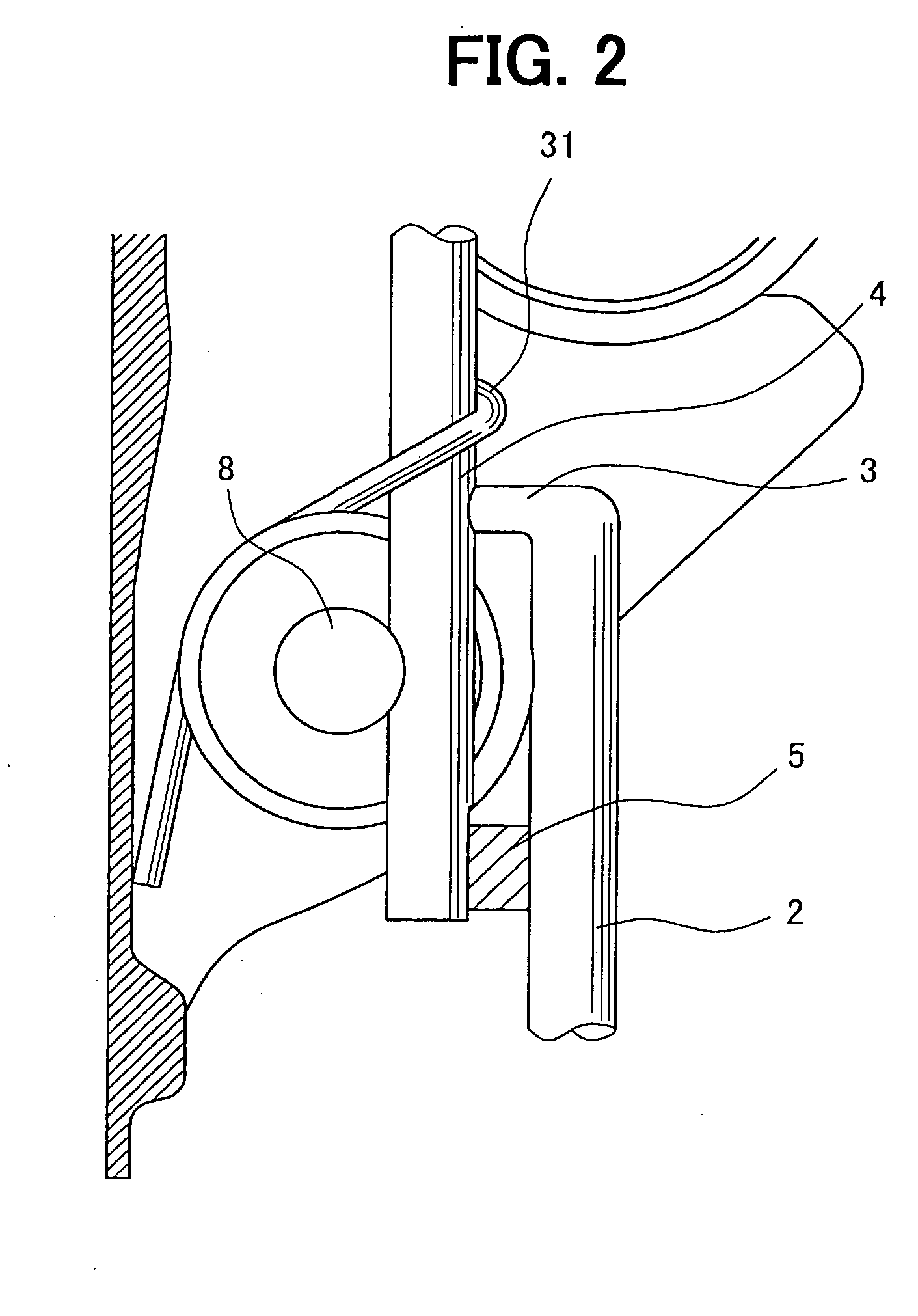Pedal force detection device
a detection device and pedal technology, applied in the direction of mechanical control devices, instruments, force/torque/work measurement apparatus, etc., can solve the problems of unintentional pedal depressing by the driver, insufficient transmission of pedal force to the load detection unit, and inability to detect the force of the pedal sufficiently, so as to reduce the breakage of the pedal, the load is larger, and the detection accuracy of the pedal is improved.
- Summary
- Abstract
- Description
- Claims
- Application Information
AI Technical Summary
Benefits of technology
Problems solved by technology
Method used
Image
Examples
first embodiment
[0043] A pedal force detection device of the present invention according to the first embodiment will be described with reference to FIGS. 1-10.
[0044] The pedal force detection device includes a pedal arm unit 1 and a load sensor 5, and is arranged in a pedal assembly 100, which is fixed to a vehicle chassis 90, as shown in FIG. 1. The pedal arm unit 1 is provided with a first arm 2 at which a pedal 10 is mounted, a second arm 4 rotatably supported by a rotational support 8 and a connecting portion 3 which connects the first arm 2 to the second arm 4. The pedal 10 is depressed by a force which has a component force F perpendicular to the surface of the pedal 10. The load sensor 5 is inserted in a gap between the first arm 2 and the second arm 4 for determining the force F.
[0045] As shown in FIG. 1, a stroke sensor 6 is provided for the pedal assembly 100 at an upper portion of the second arm 4, and interlocked with the second arm 4 to detect a rotation displacement thereof. The st...
second embodiment
[0063] In the above-described first embodiment, the load sensor 5 is inserted between the first arm 2 and the second arm 4. In the second embodiment referring to FIGS. 11-15, the pedal force detection device is provided with a load detection unit 50 sandwiched in the pedal arm unit 1, which is made of a resin and integrally formed.
[0064] In a pedal assembly 100 shown in FIG. 11, the whole pedal arm unit 1 is integrally formed without the first arm 2 and the second arm 4. The pedal arm unit 1 has ribs 11, each of which extends in a direction perpendicular to a central axis of the pedal arm unit 1. The pedal 10 is also integrated with the pedal arm unit 1 at one end of the pedal arm unit 1. The other end of the pedal arm unit 1 is rotatablely supported by the rotational support 8. The biasing unit (not shown) such as the return spring is attached to the pedal arm unit 1 to provide a resistance against the rotation thereof. Thus, the pedal arm unit 1 can be maintained at the initial p...
third embodiment
[0069] According to the above-described first embodiment, the rotational support 8 is attached to the second arm 4 to support the pedal arm unit 1. In the third embodiment as shown in FIGS. 16 and 17, both the first arm 2 and the second arm 4 are supported by the rotational support 8. Thus, the rotation of the pedal arm unit 1 will not be influenced even if the second arm 4 has a breakage. FIG. 16 shows the pedal assembly 100, in which the pedal force detection device including the pedal arm unit 1 and the load sensor 5 is mounted.
[0070] As shown in FIG. 17, the pedal arm unit 1 including the first arm 2 and the second arm 4 is mounted at the rotational support 8, which is rotatably supported by an attachment portion 91 fixed to the vehicle chassis 90. The first arm 2 is sequentially constructed with a pedal end portion 2g, a curve portion 2a, a parallel portion 2f, a bend portion 2b, a connection portion 2c and an insert end portion 2e. The pedal 10 is mounted at the pedal end 2g,...
PUM
| Property | Measurement | Unit |
|---|---|---|
| stress concentration | aaaaa | aaaaa |
| force | aaaaa | aaaaa |
| stiffness | aaaaa | aaaaa |
Abstract
Description
Claims
Application Information
 Login to View More
Login to View More - R&D
- Intellectual Property
- Life Sciences
- Materials
- Tech Scout
- Unparalleled Data Quality
- Higher Quality Content
- 60% Fewer Hallucinations
Browse by: Latest US Patents, China's latest patents, Technical Efficacy Thesaurus, Application Domain, Technology Topic, Popular Technical Reports.
© 2025 PatSnap. All rights reserved.Legal|Privacy policy|Modern Slavery Act Transparency Statement|Sitemap|About US| Contact US: help@patsnap.com



